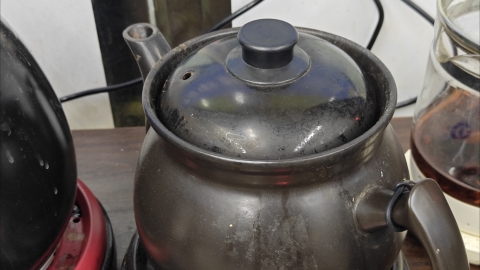What are the traditional Chinese medicine treatments for skin dryness syndrome?
Traditional Chinese medicine (TCM) treatments for skin dryness syndrome include oral herbal medicine, acupuncture regulation, external herbal therapies, acupoint massage, and dietary therapy. Treatment should be individualized based on TCM patterns such as yin deficiency with internal heat, qi and blood deficiency, etc., focusing on nourishing yin, moistening dryness, and regulating internal organs. If severe symptoms such as extreme dry mouth, dry eyes, or skin ulceration occur, prompt medical attention is recommended.
1. Oral Herbal Medicine: For the pattern of yin deficiency with internal heat, herbs that nourish yin and moisten dryness are used to relieve dry mouth and skin. For qi and blood deficiency, tonifying herbs are prescribed to improve inadequate nourishment of the skin. For damp-heat and blood stasis, formulas that clear heat, resolve dampness, and invigorate blood circulation are used to unblock meridians and regulate organ function at the root cause.
2. Acupuncture Regulation: Points such as Sanyinjiao (SP6), Taixi (KI3), and Zusanli (ST36) are selected. Needle insertion or moxibustion is applied to harmonize qi and blood, nourish yin, and moisten dryness, improving local fluid metabolism and relieving symptoms like dry skin and joint discomfort.

3. External Herbal Therapies: Decoctions of yin-nourishing and moisture-restoring herbs can be used for skin fumigation or made into medicinal ointments for topical application, directly nourishing the skin and alleviating dryness and scaling. Herbal foot soaks may also be used to promote systemic fluid circulation.
4. Acupoint Massage: Daily massage of points such as Yongquan (KI1), Hegu (LI4), and Xuehai (SP10) for 5–10 minutes each helps unblock meridians and enhance qi and blood flow, providing supportive relief from dry skin and dry mouth. This method is suitable for daily self-care.
5. Dietary Therapy: Individuals with yin deficiency should consume more yin-nourishing foods such as tremella fungus and lily bulbs. Those with qi and blood deficiency may benefit from qi-tonifying and blood-nourishing foods like red dates and Chinese yam. Spicy, drying, greasy, and fried foods should be avoided to prevent further depletion of body fluids.
In daily life, it is important to keep the skin clean and well-moisturized, avoid frequent use of alkaline cleansers, use a humidifier indoors to maintain optimal humidity, engage in moderate gentle exercise, maintain emotional well-being, and avoid staying up late or overexertion.




